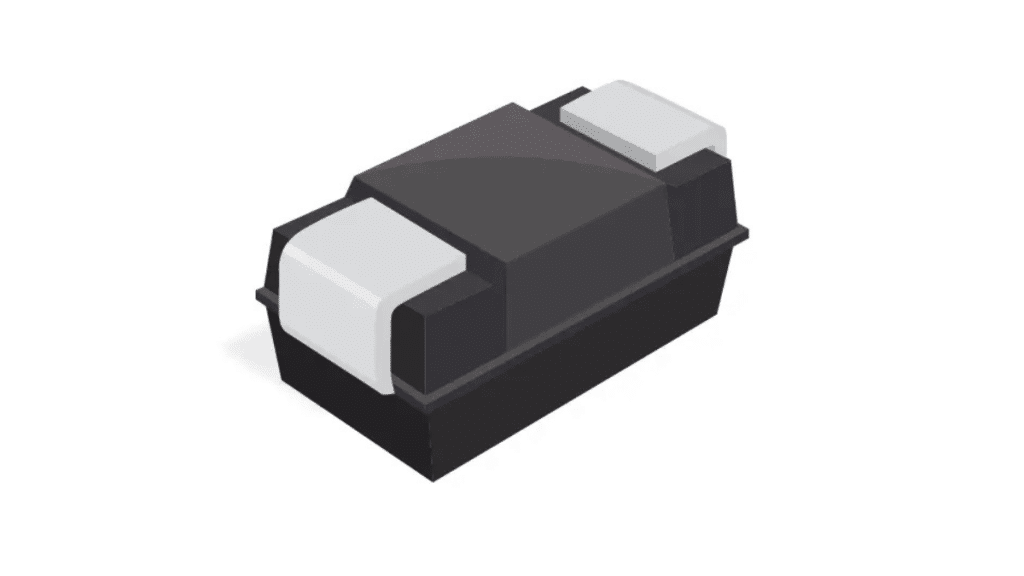In the world of electronics, converting alternating current (AC) to direct current (DC) is one of the most fundamental processes. At the heart of this conversion lies a simple yet essential component: the rectifier diode. Understanding what a rectifier diode actually does helps to appreciate how countless electronic devices—from power supplies to charging circuits—manage to function reliably.
This article explains the role of the rectifier diode, its function in converting AC to DC, and why it remains indispensable in modern power circuits.
The Fundamental Role of the Rectifier Diode
A rectifier diode is a semiconductor device that can conduct electricity only in one direction and is able to block it in the opposite direction. This one-way conduction property is the main reason why the rectifier diode is so important to the conversion of AC voltage, which constantly changes polarity, into a steady DC voltage required by most electronic circuits.
AC power, such as the electricity delivered by wall outlets, changes direction periodically—usually 50 or 60 times per second depending on the country. Most electronic devices cannot operate on this fluctuating voltage because they need a constant polarity to function properly. This is where the rectifier diode steps in.
When placed in an AC circuit, the rectifier diode permits current flow only during the positive half-cycles of the AC waveform and blocks current during the negative half-cycles. By doing so, it effectively converts AC into a pulsating DC signal. Although this output is not yet a smooth DC voltage, it provides the necessary polarity for further processing and filtering stages.
How Rectifier Diodes Work in Power Circuits
The incorporation of rectifier diodes in power circuits serves as the main regulator for the safe and efficient operation of electronic devices. First, in a typical power supply, the AC voltage goes through a transformer (if the voltage needs adjusting), then through a set of rectifier diodes, before finally reaching the smoothing components it like capacitors or voltage regulators.
The most common arrangement is the full-wave bridge rectifier, which employs four rectifier diodes placed in a bridge configuration. This setup permits the conversion of both parts of the AC waveform to DC, thus doubling the pulse frequency and ensuring a more stable DC output in comparison to the half-wave rectifier, which only uses one diode.
Rectifier diodes that are specifically made for power applications such as 1N5408 are included in the design because of the high voltage and current handling characteristics together with the fast switching speeds and minimal forward voltage drop. Quality rectifier diodes utilize this result to ensure that the power supply is free of the problem of providing a reliable DC voltage without significant energy loss or corresponding heat generation.
Reasons Why Rectifier Diodes Are Still Necessary
Unquestionably, the rectifier diode is still a key contributor despite the fact that power electronics have made such significant advancements, such as procuring power supplies and complex regulator ICs. The diode’s simplicity, reliability, and efficiency in transforming AC to DC are not easily replaced.
For example, in the case of modern switched-mode power supplies (SMPS), the technology relies greatly on fast-recovery or Schottky rectifier diodes being used in their output stages to change the electrical signals from switched AC into a form that can be readily used as DC. A fair selection of the diode improves not only the efficiency of the device but also the thermal performance and operational lifetime.
Furthermore, rectifier diodes are multifunctional and do not just filter redundant electrical energy. They have utility as reversible devices that can prevent damage from reverse polarity, in demodulation signal circuits, and in voltage multipliers, thus proving their utility in the field of electronics.
Physical Features of Rectifier Diodes
A power-circuit rectifier diode’s functionality is based on a set of stipulated technical characteristics. For instance, the rectifier diode should feature a high peak inverse voltage (PIV) below which it can restrict the reverse bias without hurting. Additionally, this requires a sustained forward current rating, which is well above the maximum expected load to prevent an eventual breakdown.
The forward voltage drop is yet another paramount specification. In all conditions, diodes do exhibit voltage drop, especially at power-on state conduction, but power rectifier diodes try to cut this down to improve efficiency by reducing power dissipation. Manufacturers carry out tailored designs for particular rectifier diodes that have optimized junctions and materials so as to have the right balance of these features. Therefore, such devices are available for different power levels, switching speeds, and environmental conditions.
Final Words
The rectifier diode is a key player in electronic systems that find the conversion of AC power to DC power particularly important in the operation of almost all electronic devices. The rectifier’s ability to conduct current in one direction only is the principle behind power rectification; hence, it is one of the core components of power supply design. From simple half-wave rectifiers to tricky full-wave bridge arrangements, the rectifier diode lets that fluctuating AC voltage be accurately shown as a more usable DC voltage.
This, together with filtering and regulation, is the basis for electronic circuits to work securely and efficiently. Even with advancements in technology, the rectifier diode continues to be a fundamental element in power electronics. The demonstration reaffirms that sometimes the simplest components have the fullest effect. In the case of rectifier diodes, they are the unassuming but vital part of products from consumer electronics to industrial machines to communication systems, thus keeping the world of electronics running without a hitch.
